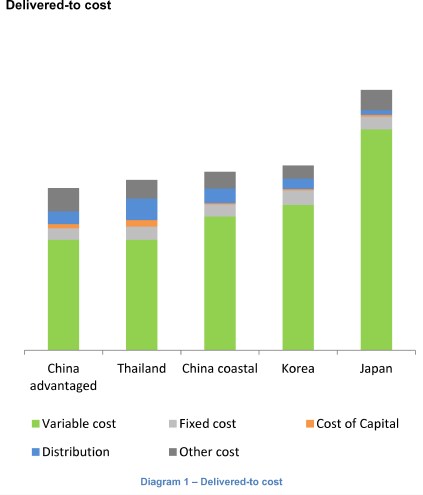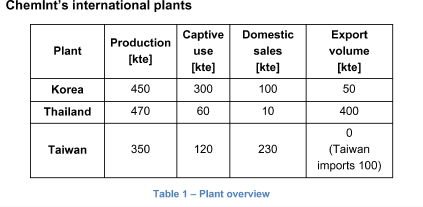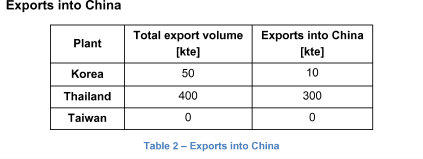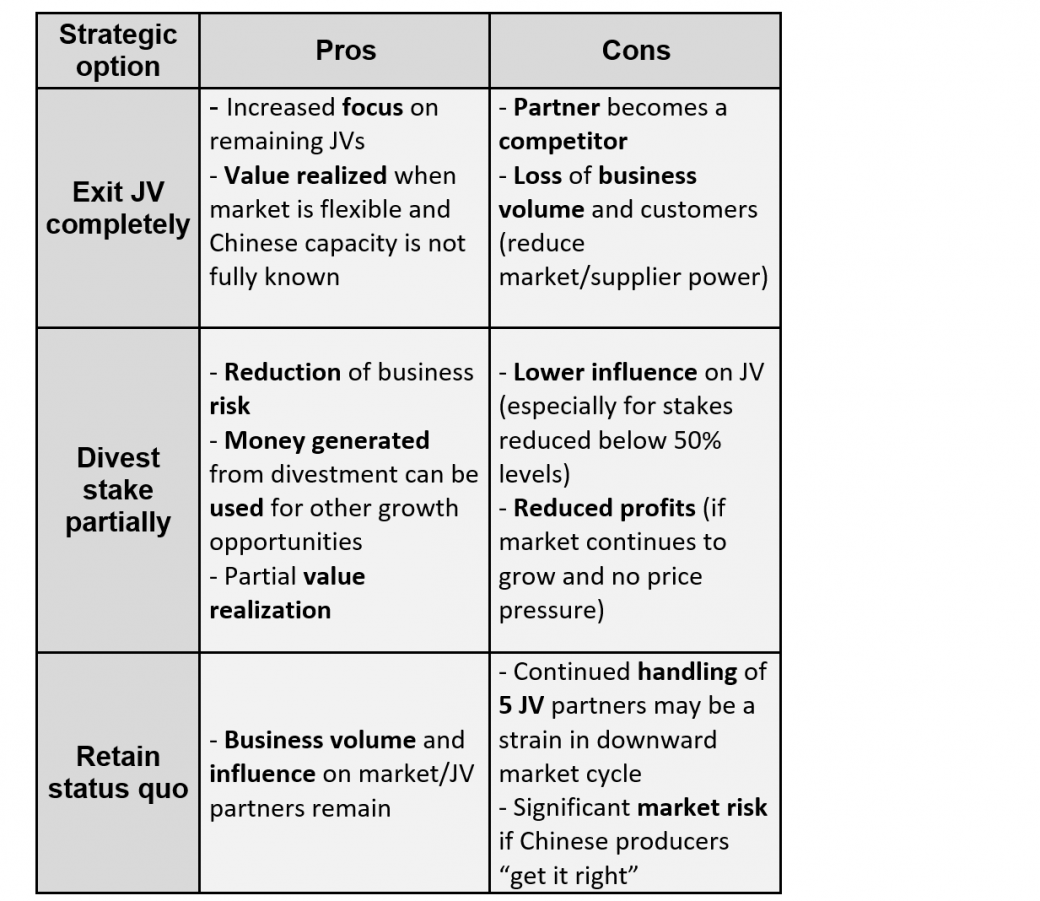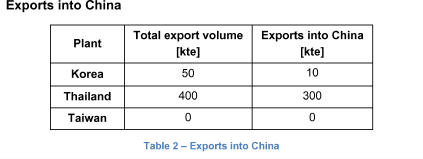ChemInt
Your client, ChemInt, is a global chemicals company that manufactures Ponsulene in some locations around the world.
It has several joint ventures (JV) in Asian markets and in total 5 plants in China, Korea, Thailand, and Taiwan, all of which serve the local markets as well as neighboring markets including China.
Due to the strong demand for Ponsulene and profitable margins in China, a number of new Chinese players are entering the market in China as well as in the neighboring countries.
ChemInt has called in your company to estimate the influences on their business by these happenings.
Case Comments
I. Cost analysis
1. Can China cost-effectively serve the local market compared to ChemInt? Why or why not?
II. Profitability analysis - Part 1
2. Can China cost-effectively serve the local market compared to ChemInt? Why or why not?
II. Profitability analysis - Part 2
3. Which of ChemInt’s international plants will in your opinion have the higher margins? Why?
III. Options and conclusion - Part 1
4. What are ChemInt’s strategic options for market participation? Highlight the pros and cons of each.
III. Options and conclusion - Part 2
5. How should the company evaluate the strategic options regarding the JVs?
Further Questions
As mentioned, more Chinese companies will enter the market in the next years.
Can the entry cause any advantages for ChemInt? What are the risks of entering the Chinese and Indian market, in order to try to take advantage of the rapid growth?
What other markets could you think of that could take the large volume in question?
Note for Interviewer
More questions to be added by you, interviewer!
At the end of the case, you will have the opportunity to suggest challenging questions about this case (to be asked for instance if the next interviewees solve the case very fast).
